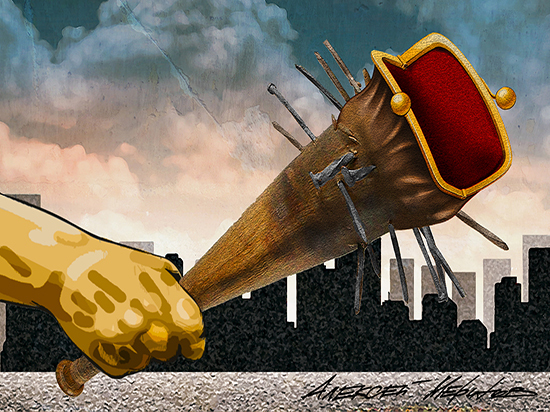Debtors have lost protection from collectors: the moratorium on bankruptcy no longer applies
[ad_1]

What to expect for borrowers with outstanding debts
Collectors and bailiffs again have their hands untied: from October 1, the six-month moratorium on bankruptcy of both legal entities and individuals ceased to operate, which means that Russians with overdue debts will again have a “fun life”. People specially trained to knock out debts will surely remind them of their existence by all available means. But the catch is that today, against the backdrop of falling incomes of the population, many debtors have absolutely nowhere to get money to pay off at least interest on loans.
The moratorium was introduced from April 1, 2022 by a government decree in order to support entrepreneurial activities and citizens in difficult financial situations. The bottom line is that he forbade creditors to go to court with a statement about the insolvency of the debtor. In addition, penalties and fines were not charged for the delay in fulfilling obligations under contracts and late making mandatory payments. Now that protective umbrella has been removed, and people need to prepare for calls, fines, and any other form of pressure. Collectors will regain the ability to collect debts on the basis of court decisions. The state and banks need money more than ever.
Some time ago, the government considered extending the moratorium until April 1, 2023, but eventually abandoned this idea. According to the head of the Ministry of Economic Development Maxim Reshetnikov, “this creates many more questions. This is also the request of the business community.”
Meanwhile, due to falling incomes, the credit burden of the population continues to grow: by the summer of 2022, it amounted to almost 25.5 trillion rubles, having increased by 1.5 trillion over the year. The share of consumer loans in it is 43.3%, mortgages – 30.6%, credit card debt – 15.9%, car loans – 8.9%, debt to MFIs – 1.3%. According to the National Bureau of Credit Histories, the share of payments on consumer loans overdue by 90 or more days now accounts for about a third of all consumer loans.
“From October 1, all restrictions within the framework of enforcement proceedings were lifted: the creditor got the opportunity to initiate the bankruptcy procedure, the enforcement of judicial acts,” explains Pavel Gerasimov, General Director of the Padva and Epshtein Law Office. – The moratorium was “total”, that is, all persons fell under it, with rare exceptions. It was forbidden to file an application for declaring the debtor bankrupt, although it was possible to go to court with a claim to recover the debt.”
The expert considers the decision not to extend the moratorium to be absolutely correct. According to him, the measure introduced in April allowed even quite solvent borrowers to avoid fulfilling their obligations. Further accumulation of the debt mass is inexpedient, since it leads to a domino effect: a creditor who does not receive money from the debtor often cannot, in turn, pay off his (“superior”) creditor. And if during the six months of the moratorium the debtor has not been able to find the required amounts, an additional delay will not save him, will not allow him to restore solvency. In addition, the lawyer concludes, unscrupulous debtors could use the moratorium to alienate their assets in order to subsequently make it difficult for the creditor to receive the debt.
“This six-month reprieve proved to be very beneficial for the business climate,” says Andrey Loboda, an economist and director of external relations at BitRiver. – Small and medium-sized businesses have received an additional safety cushion, which is absolutely not superfluous during a period of turbulence. The moratorium allowed him to pay dividends, buyback cheaper (and therefore attractive in price) shares, work more actively in the debt market and attract investors. As for the situation with individuals, the point here is rather in the risk management of banks issuing loans. It sounds paradoxical, but today it is much more difficult for an individual to get a loan (banks have become stricter on borrowers) than it is for a legal entity to liquidate a company or reorganize it according to a simplified procedure.”
According to Elman Mehdiyev, Chairman of the Council of SRO Mir Elman Mehdiyev, the moratorium was a quick response to possible panic among the population and businesses after the imposition of severe financial sanctions by the West. It allowed businesses and citizens not to end up in a situation of final and irrevocable bankruptcy. And now it’s time to return to your duties and start making monthly payments again, not forgetting the risks of potential fines, penalties and other financial sanctions.
[ad_2]
Source link






